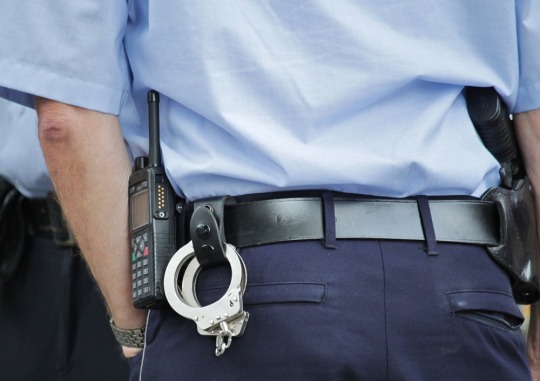#David Golembiowski New York
Text
Chicago Alternative Policing Strategy (CAPS)

The City of Chicago has another weapon in the battle against wrongdoing — and that new weapon is you, the community. Another organization among police and network is the establishment of Chicago's own reasoning of network policing, known as CAPS — Chicago Alternative Policing Strategy.
Community policing has turned into a famous wrongdoing battling methodology the nation over, yet there is nobody meaning of network policing or one explicit method for doing it. From the time he was designated in April 1992, Police Superintendent Matt L. Rodriguez propelled a technique of network policing that is explicit to Chicago. Tops are interesting reasoning that acquires from the encounters of different urban communities, yet additionally breaks imperative new ground in addressing the requirements of the Chicago Police Department and the Chicago people group.
What makes CAPS imaginative is that it brings the police, the network, and other City organizations together to distinguish and tackle neighborhood wrongdoing issues, as opposed to just respond to their side effects sometime later. Critical thinking at the area level is bolstered by an assortment of methodologies, including neighborhood-based beat officers; customary Beat Community Meetings including police and inhabitants; broad preparing for both police and network; progressively productive utilization of City benefits that sway wrongdoing; and new innovation to help police and occupants target wrongdoing problem areas.
With CAPS, cops keep on authorizing the law and react quickly to genuine violations and dangerous crises. In any case, CAPS perceives that the police alone can't tackle the City's wrongdoing issues. It requires a joined exertion of police, network, and City government cooperating. Usage of CAPS started in April 1993 with the official take off in five of the City's 25 police areas: Englewood (seventh), Marquette (tenth), Austin (fifteenth), Morgan Park (22nd), and Rogers Park (24th). These model locales are differing as far as their socioeconomics, financial aspects, wrongdoing issues, and dimensions of network association. All things considered, they gave an important research center to testing and improving the CAPS display before it was extended Citywide.
Usage of CAPS in the other 20 police areas started in 1994, and the system is presently operational in the majority of Chicago's neighborhoods. The five unique model areas keep on filling in as a research center for testing new thoughts and new innovation. CAPS have been perceived as a standout amongst the most driven network policing activities in the United States. It has been referred to as a model by various national specialists, including authorities at the U.S. Branch of Justice and scholastic experts on network policing. The executives master Tom Peters included the Chicago Police Department and CAPS in his most recent business video, Service with Soul.
-David Golembiowski (New York)
1 note
·
View note
Link
0 notes
Text
From A Female To A Cop

You may think it’s somewhat a laughing stock, but it isn’t. To be accepted and revered among alternative officers who are principally male, we have a tendency to as feminine officers typically should leave our muliebrity behind.
Females have to be ready to get their hands dirty and jump into things with resistive subjects to indicate that they are not a liability. They’ve got to be ready to roll with the punches amid dirty jokes, flatulence, and different behaviors usually displayed in a very male-dominated field. Being female is commonly seen as a hindrance as critical associate attribute once garnering respect from male coworkers as a result of they feel like they have to guard us rather than target the matter they’re called to handle.
A very common perception – Females are less welcomed and it takes time to be accepted than other male classmate who joins with them. Generally, male dominant coworker wonders if these females could handle a fight or perception/ cussing ladies out calling their every name in the book and if they could keep it together when she has a homicide.
When it comes to femininity, the primary thoughts that come in mind is of a woman’s physical look versus a man’s. they’re stereotypic attributes like a curvy body, long hair, makeup, jewelry, cosmetics, dresses, and un-sensible shoes, to call some. With a police uniform on women are set to a standard to all look somewhat alike, therefore the uniform. It’s a model of androgyny.
The paramilitary mindset keeps all officers looking the same in order to make police easily identifiable to the public and looking like part of the same team while keeping the appearance at a professional standard.
Attributes that are considered to be more female are sensitivity to others’ emotions, associated social skills that cause an exaggerated ability to speak with others effectively. Men are typically well-known to be more physical and gruff as a type of communication, whereas females are better-known to speak out their issues, leaving the physical altercations as a final resort. Partly this could be due to the fact that ladies need to use words over physical force, as most people do not carry the physical stature that men do give them a more tactical advantage for fighting. However, ladies are more naturally turn to talk out a controversy before jumping to physical action. This is often wherever ladies shine in the investigation.
-David Golembiowski (Port Authority Police)
1 note
·
View note
Link
1 note
·
View note
Link
1 note
·
View note
Link
0 notes
Link
0 notes
Link
0 notes
Link
0 notes
Link
0 notes
Link
0 notes
Link
0 notes
Link
0 notes
Link
0 notes
Link
0 notes